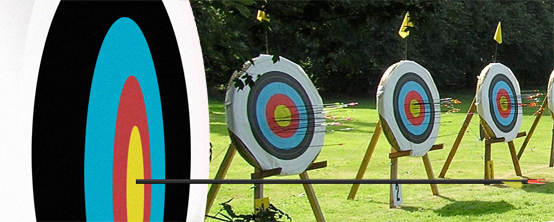
I remember taking archery in a physical education class when
I was in high school. Our teacher placed a row of targets at the base of a hill
beside our school. We all took our turn shooting at the target in front of us.
If you have ever tried it, the first time you shoot an arrow is a bit awkward.
Steadying the arrow on the string as you pull back on the bow takes some
practice. I remember the first time I shot an arrow; it actually hit a target,
just not my target. I shot it so far off course that it hit the target of the
archer standing to my right! There is a simple axiom in archery: you cannot hit
what you are not shooting at. The same is true in marketing. We often refer to
groups of potential customers as a target market. How well are you aiming for
your particular target? Or are you aiming at no particular market at all,
hoping that just anyone will buy from you?
Defining your
solution to a problem
What is the value in what you do? Another way of saying this
is what problems do your products or services solve? You may make a task easier
to do. You could make something operate faster to save time, or create
efficiencies that reduce costs. Whatever it is you produce, think of it in
terms of a solution to a problem.
Defining your target
market
Who is likely to have this problem? Are there natural
groupings of people who would benefit from having your product or service?
Connecting the solution to the people with the problem defines your target
market. This group can be different at different times of the year or based on
their location. The common factor is the need for a solution. For instance, if
you are producing snow blowers, you would find your target in the winter months
in areas where there is a lot of snow – like Minnesota. If the same people in
Minnesota had a second home in Florida where they spent the winter months, they
have fallen out of your target group.
Shifting targets
What are other ways to solve the same problem? Just because
someone has a need that your product solves does not guarantee they will buy
from you. What are the other solutions? And who offers this alternative solution?
Going back to our snow blower example, let’s say there is a snow plowing
service that offers to keep sidewalks and driveways clear of snow. For a low
monthly fee, they will shovel snow for homeowners any time there is any
accumulating precipitation. Their monthly fee is so low that it costs half of
the price of your snow blower to have snow removed for an entire winter season.
Now you have a competitor with a service that trumps your product. Who would
want to buy your snow blower and plow their own driveway when they could stay
inside and let someone else do it for them at half the cost? What once was a
target market for you is moving away from you. What should you do in this
situation? Refocus on a new target market. Who would that be? The snow moving
company! You see, there is still a problem that your product solves – snow is
still falling in Minnesota. The only thing that is different is the group of
people who have the problem has now shifted. You have to move to a new target.
Your edge on the
competition
The one marketing question you always want to keep asking
yourself is this: why is your solution better than the alternatives? This is your marketing edge and should be what
you are promoting to your target market. In marketing circles we call this your
Unique Selling Proposition (USP). When
your USP no longer gives you an advantage on your competition, it is time to
change something. Either change your product or service to put you at a
competitive edge or aim at another target.
At the heart of this is to really understand your customers
and the base of people that are prospective customers. People are easily
influenced to change their minds. They are fickle. Attitudes that were in vogue
one day will be disdained the next. Keep in touch with your target market.
Become a student of them and their perceived needs. As long as you can solve
their problem, you have a target for which you can aim.